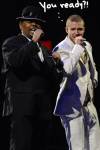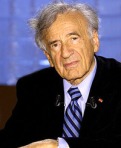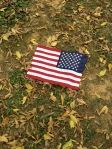 Teaching writing to children and adults has many similarities and a few differences.
Teaching writing to children and adults has many similarities and a few differences.
With both groups the joy and excitement of creating spews forth. With the proper support and inspiration, both groups create fresh, new perspectives that even they didn’t know they had within themselves.
This joy of discovery is contagious and exciting to both writer and reader. Both groups love to share and have others comment on their writing. Their eyes just sparkle once they get over the anxiety of opening up their lives to others.
I found this joy especially true when I used the poem “Where I’m From” by George Ella Lyon to get both students and adults to investigate their younger days with a creative voice.
So many stories surfaced in the poems created by my fourth grade students as well as adult ESL students at City College in New York as both groups associated memories with objects and people of their past. (Of course lots of group brainstorming preceded anyone putting pencil to paper to compose their own poems to stimulate these memories.)
Sharing is where students are somewhat easier to sell than adult writers. Once initial trust is established within the writing group and students know that others comments will be offered with a sense of pride in what they are offering, students share readily.
Adults often have more to fear from the judgment of others and hesitate longer before they will share. One rule in a writers’ group that helps with this problem is that everyone will share at least once during the session.
The adult sessions that I taught for the School Writing Project usually lasted ten weeks. Knowing this rule up front allows folks the choice of what to share.
Another area where students and adults differ is the willingness to revise their piece of writing based on the feedback of their peers. Students often jump in too quickly to change their writing based on the criticism offered by others. Adults more readily understand this and hold on more tightly to creative control of their writing.
As a teacher, it’s my job to convince them of their ownership of the writing and how what others say is just a suggestion – that may not be right for this piece of writing. Changing even one word in a piece of writing can significantly change the meaning or tone of the piece.
As a teacher I found joy and challenges in teaching writing to both adults and students. It’s a joy I consider a privilege.
I am from… by 3rd grade writer Emily Luther
I am from Boxcar Children books and from Disney movies. From the soft blue couch, the soft blue chair and a colorful tile table.
I am from strawberry waffles, Mexican pizza, sour Starburst and an antique cabinet. From granola cereal and oatmeal, milky ways and chocolate ice cream.
I am from jitters in my closet, my cat Sharah meowing at the birds, Pokemon on TV and the cat’s fluffy fur. From an antique desk and news on the radio.
I am from mom saying, “STOP!” to my twin brothers who are fighting after Pokemon cards. From a safe feeling in the kitchen.
I am from a silver box with all my feelings.
I AM FROM by ESL adult City College of New York student Mariana Negrila of Romania
I am from the perfume of the roses, the sweet voices of the baby chickens, and savory organic food. I am from my father’s sweating and bleeding painful hands as he built our house, where my mother washed the carpets with a cold water hose and her soft hands.
I am from the land of Eminescu, whose words are “love is everything,” and people read to forget their hunger. I am from a friendly town where people used to say to an unmarried woman: “Don’t worry, who’s yours is safe somewhere and is coming.”
I am from a full stomach when my brother and I had to lie down because we were exhausted from the heavy, covering the table meals. I am from “mitten” — small sized, chipped, grilled meat–, “salata boeuf”–a mixture of vegetables, meat, and mayonnaise- that I always liked to ornament.
My memories live in my mind. They are precious to me.
 To connect to the emotions of a character, I always taught my students that characters in their writing need to share from the head, their intellect, as well as the heart, the emotions. In fact, I would have them sketch a quick gingerbread body shape and put a heart and a brain in the appropriate spots. Then I would have them draw a line from each organ to what line/s of dialogue or what line/s of narrative would connect the reader to each of these response areas. This seemed to get the results I was seeking.
To connect to the emotions of a character, I always taught my students that characters in their writing need to share from the head, their intellect, as well as the heart, the emotions. In fact, I would have them sketch a quick gingerbread body shape and put a heart and a brain in the appropriate spots. Then I would have them draw a line from each organ to what line/s of dialogue or what line/s of narrative would connect the reader to each of these response areas. This seemed to get the results I was seeking.









